18. RED MAPLE, Acer rubrum
CT Notable Tree
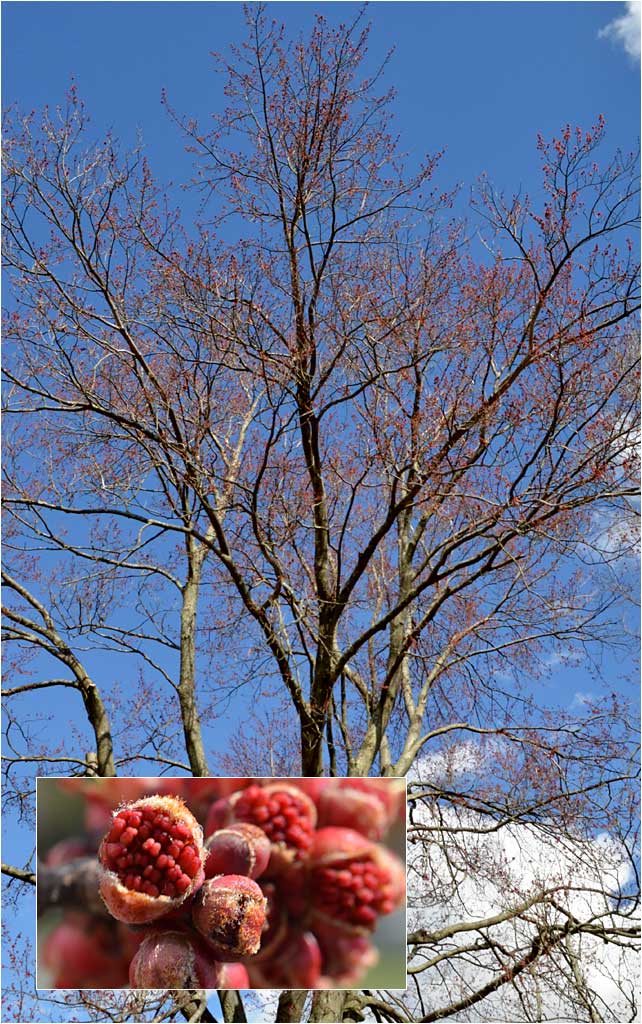
14% of all trees in CT are Red Maples. It is our most commonly seen tree by far, and adapts well to sun or shade, wet or dry. Red Maples are the first tree to significantly turn color in Spring, and in March (even late February in some years) you will see the the branches starting to turn red. Look close. These are the flower buds of the Red Maple, small, tight, and compact. They don't remain buds for long...
RED MAPLE, MALE FLOWER
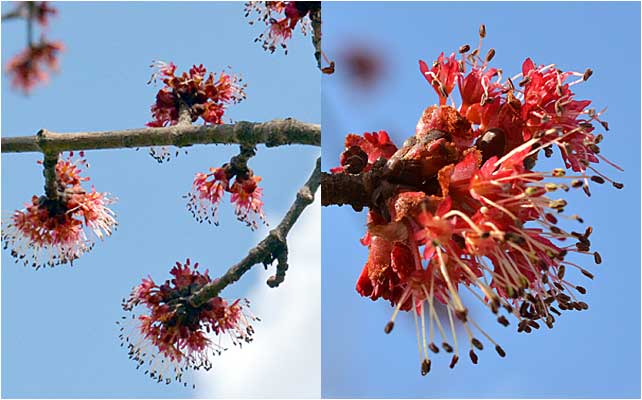
This tree is a male, and only bears male flowers. Maples are dioecious (male and female flowers on different trees) but they do have the ability to mix things up from time to time. Typically, they stay the same sex. The long stalks you see are stamens, and the little pods at the end are called anthers. The pod is where the pollen is.
MALE vs FEMALE FLOWER
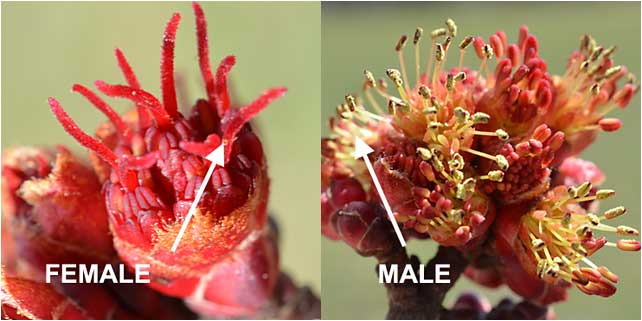
It can sometimes be difficult to tell the sex of a tree, and particularly in Spring. Almost universally in the plant world, the female flowers will have some version of the Y shaped organ shown above, called a stigma This "Y" catches the pollen. Males, on the other hand, almost always have long filaments with pollen pods at the end. This is called a stamen.
SUMMER
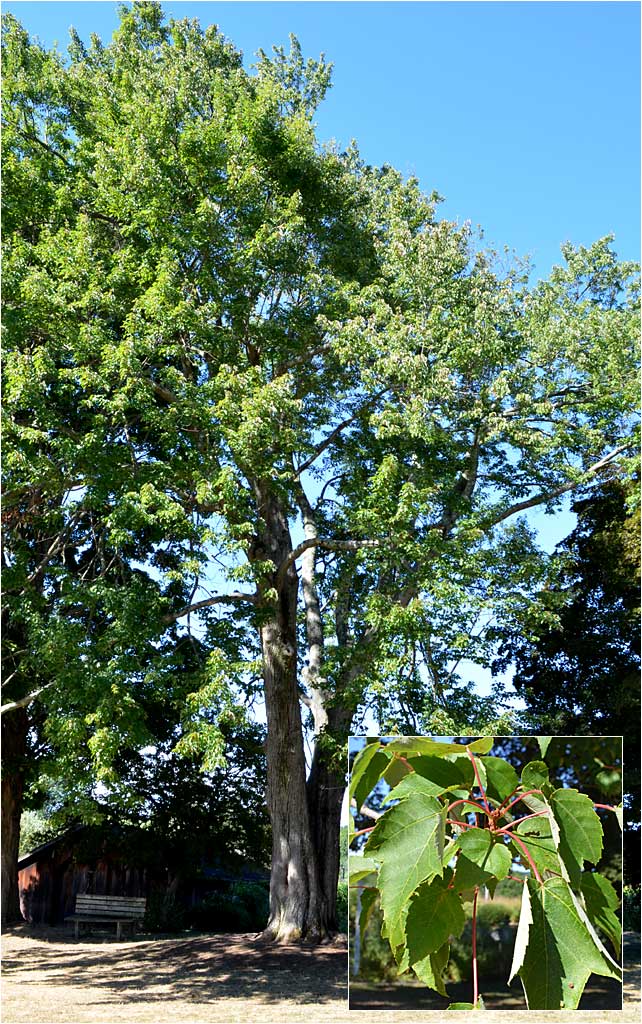
"RED" Maple gets its name for its red buds and flowers, the stems of its leaves (above, called petioles), and its shocking red fall foliage. It has a distinctive, familiar leaf shape, and identification by leaf alone is usually pretty easy.
FALL
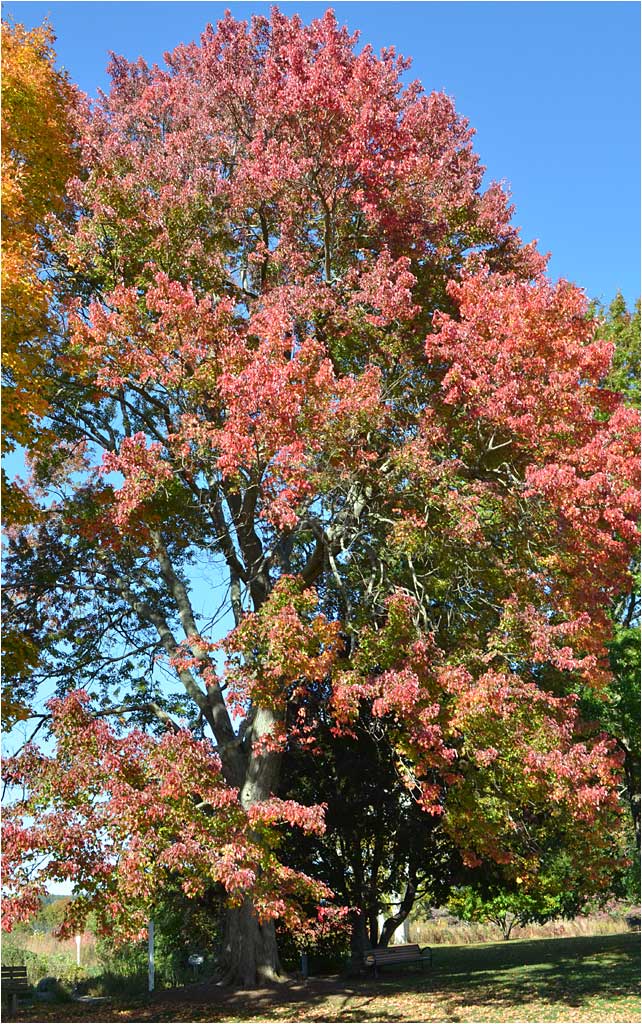
Fall is an interesting time of year for Red Maples. Not only do they turn a brilliant shade of red, they also don't follow the rules that most trees do. Trees of the same species typically drop their leaves at the same time. Red Maples take a different approach. They will take app. 2 weeks to lose their leaves, but almost 2 months for all the trees to go through the process. So you can see a tree in full fall foliage next to one that is nearly bare...
JUST WHAT COLOR IS RED?

"RED" is truly in the eyes of the beholder for Red Maples and you will typically see many shades of red (and yellow and even orange) in Red Maples. Although in general male trees turn red and female yellow/orange - it is not a hard and fast rule.
WINTER

This is an old Red Maple, and a CT Notable Tree. The center area (and entrance) to the Westmoor Arboretum has been the center of the farm property going back hundreds of years. The current Visitor Center dates back to the late 1800s and was the "last farmhouse". While we have significantly older trees in a few other parts of the property, this central area is home to many.
BARK? DON'T BET ON IT!

Some say that maples are the "trees of 1,000 barks" - a reference to the wide variety and types of bark you can see among different Maple trees, on trees of different ages, and even on portions of bark on the same tree. While bark is sometimes a reliable ID key (like Black Cherry), it is best to confirm your maple ID with other criteria as well.